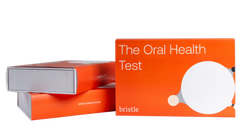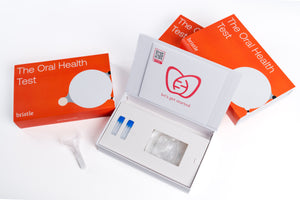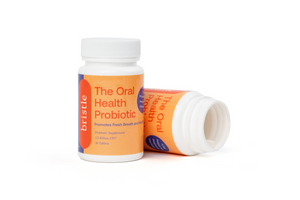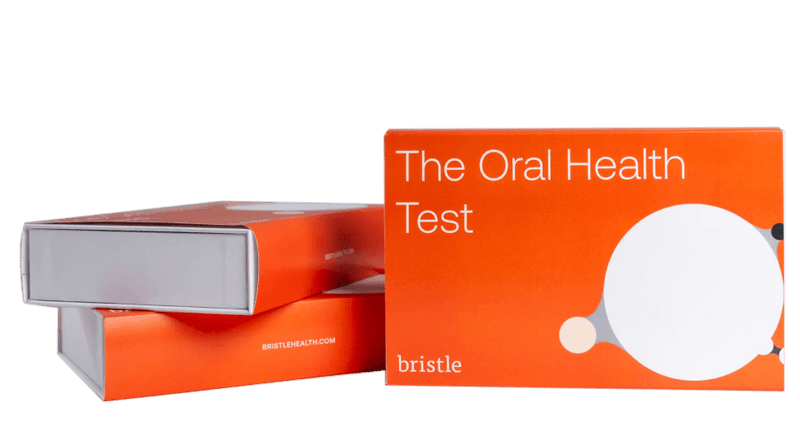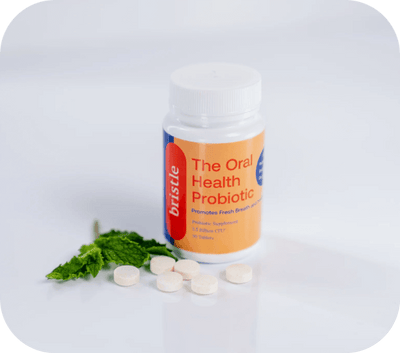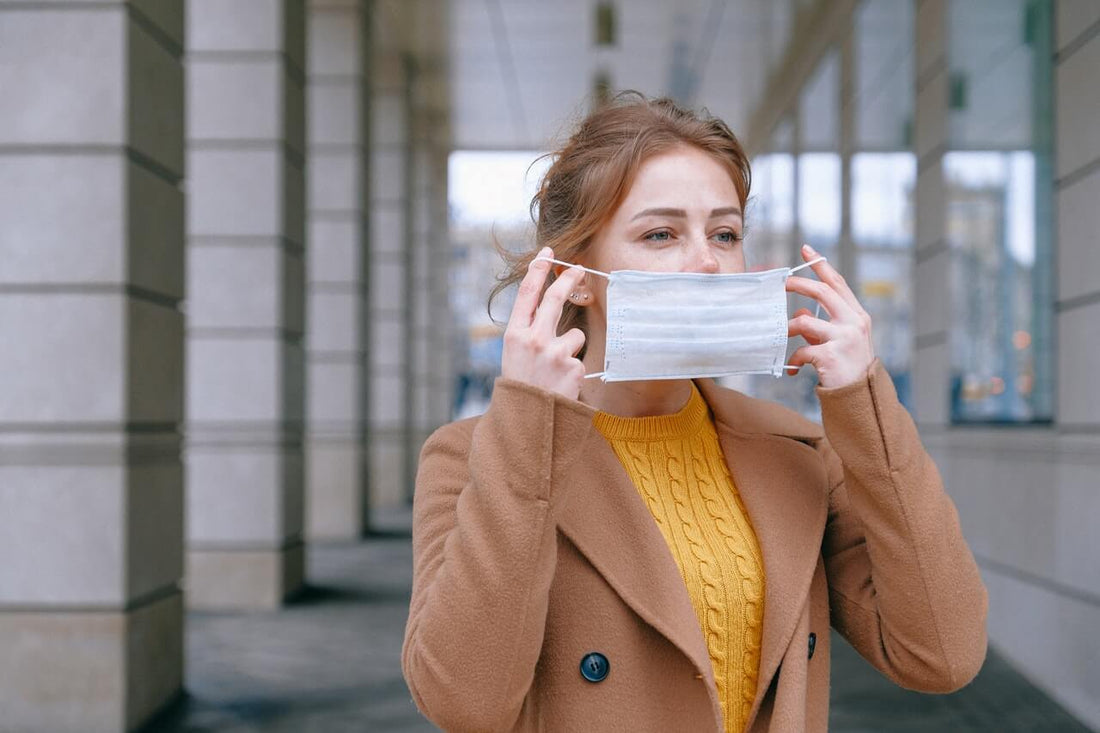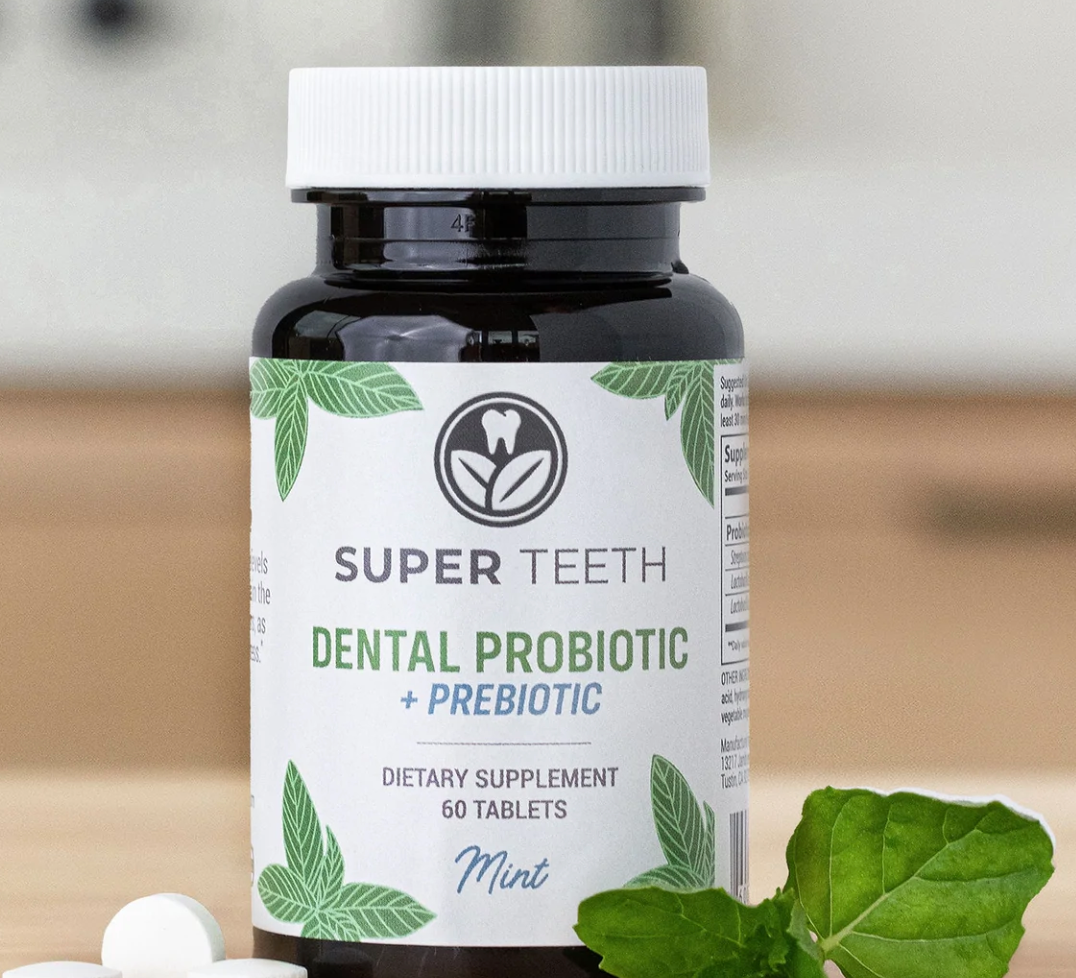Bristle offers customers an at-home test that provides information about the oral microbiome - the community of bacteria and fungi, - that plays a major role in the progression and incidence of oral disease. The most prevalent oral diseases are cavities (aka caries), gum disease (gingivitis and periodontitis), and bad breath (halitosis).
But how does the test work?
Bristle uses genetic technology, specifically DNA sequencing, to see what’s in your mouth using a simple saliva sample. You may think of DNA sequencing as looking at your personal DNA and genetic makeup, but our test isn’t analyzing YOUR DNA. Instead, we use the same technology to examine the DNA of the microbes in your saliva.
To better explain this process, let’s think of the human mouth as a child’s playroom filled with millions of toys. Imagine each toy is a different microbe in your mouth. For instance, toy cars represent bacteria, stuffed animals are viruses, dolls are fungi, and there’s even more toys representing dead skin cells, which are constantly being shed in your mouth. If you needed to inventory this very full room, where would you start?
You could go to every shelf and bin counting each toy, making note of its type, color, size, etc. Imagine that each shelf also has containers with beads, glitter, marbles, and art supplies. Instead of counting toys, so does this mean you need to also count each piece of glitter? To get an accurate count of what’s in the playroom, you probably do. But is it easy or even feasible for billions of toys?
Now, imagine a tidal wave washes through the playroom. Toys get strewn everywhere, some still floating in standing water after the wave subsides. You still need to inventory the room so you grab a large bucket and start bailing out the water.
If you look into a bucket of water, there will be Legos, marbles, glitter pieces, and maybe a small stuffed animal or two. Depending on how much water you collect, you could get a pretty good idea of what had been in the room before the wave without having to wade through all the water and do a full inventory.
This is how you can think of the saliva sample you send into Bristle. It’s a small piece of the big picture. Our test is comprehensive and we can “see” almost everything in the room without it being too invasive or expensive.
Understanding the big picture, or the balance of the good and bad bacteria, is critical when it comes to achieving a healthy, balanced microbiome. A small saliva sample is non-invasive, quick and painless and can easily give us a peek into the ‘playroom’ that is your mouth without disrupting its joyful chaos. No need to dismantle the shelves or collect every single toy. We can easily get what we need to understand what’s going on in your mouth from that small sample of spit.
You might ask why we use spit instead of swabs to collect samples. Basically, a swab is the oral health equivalent of trying to sweep a shelf, which can be tricky. You could accidentally drop a toy from the shelf above (contamination) or fail to catch everything that’s actually hanging out in the mouth (undersampling). Saliva testing, on the other hand, is hassle-free and provides comprehensive insights without these pitfalls.
Once we receive your sample in the lab, we use "shotgun metagenomic sequencing" to look at every single toy, no matter how small, to figure out exactly what’s in your playroom. Let’s break down each part of this method to understand how it works.
Shotgun in our method is referring to the untargeted nature of our approach. By contrast, some approaches to look at the makeup of bacteria, viruses, and fungi in a sample rely on targeting specific microbes. These approaches can decrease the cost of the test substantially, but they significantly sacrifice the power of the data that come from the sample. Bristle has chosen to future-proof the platform by using this shotgun approach. By looking at the complete oral microbiome, we can give you deeper insights into your health, and update our findings as new research emerges.
The meta in Metagenomic means “comprehensive” and genomic means “DNA content”. In short, Bristle looks at all of the microbe DNA in a sample. In the playroom, there are thousands of toys of varying sizes, colors, and shapes. From a bird’s eye view, you can only see toys of a specific size because of limitations to your eyesight. Our metagenomic process essentially puts every toy in a blender, allowing us to take a small sample of everything regardless of its size (though you can imagine that smaller things are more difficult to sample).
DNA Sequencing lets us “read” the order of the 4 chemical bases that make up DNA (you may remember A, T, C, and G from high school). The “sequence” of these blocks helps us determine which microbe we are looking at, and get an idea of what it does (for example, does it produce helpful things like Nitric Oxide, or harmful things like inflammation). This technology has come a long way over the last two decades and it’s what allows for such a complete picture of what’s going on in your mouth. Imagine all the contents of the toy room are thrown into a blender and every toy is chopped into a thousand pieces. It would be almost impossible to reconstruct what toys were in the room. But with DNA sequencing, we can look at the tiny pieces from each toy and identify what the original toy looked like. Going deeper into the analogy: a fully constructed titanic lego set has a unique piece that is only part of the titanic lego set. Even if we scattered all the pieces of the titanic, we would know that the titanic was at one time in the room because we found its unique piece (sequence) in our blender.
So how does this sequencing data become microbiome data? If you look closely enough, each toy fragment in the blended room can be assigned to a specific item. But, each fragment can only be assigned to that item with a limited confidence. For instance, a gray piece of dust? It could be from a ground up Lego or from a gray Hot Wheel. This is why we are constantly working to improve the assignment of items found in the blender. We use a number of bioinformatic, software to analyze biology, technology, mostly relying on research from academic labs coupled with our own internal database of saliva samples.
The real magic is what happens next with your sample. We use our database which features metagenomic sequencing data from saliva along with matched dental records so we are able to compare findings from one mouth to those of another and make predictions about what sort of symptoms someone is experiencing. To go back to the playroom analogy, these two rooms have nearly identical toys and one of these rooms has gum disease. We know it’s highly likely the other room either has or will develop gum disease as well!
Your microbiome data looks like an inventory list, with items corresponding to a “count” of how many of those items we found in the room. But since we don’t actually take count of every item in the room, how do we know how many of each toy there is? This is where relative abundance comes in.
Remember the tidal wave that came through our playroom? As we count items in our bucket after the flood, we make note of what percentage of the sample it makes up. Let’s say we find 20 blue marbles, and 80 red marbles. The relative abundance of blue marbles is 20%, and red marbles is 80%. From there, we can extrapolate these numbers and get to the total relative abundance of a sample and understand all the toys, or microbes in your mouth.
It’s more fun to compare your toy collection to another collection so you can brag about what you have. That’s why we’re building a database of as many playrooms (aka mouths) as we can! We want to include as much information as possible because the only way to give the oral microbiome meaning is to compare it to others.
This is how science becomes meaningful for your oral health. Our massive database with metagenomic sequencing data from saliva samples and matched dental records allows us to predict what's going on with your oral microbiome. We can help you determine whether it’s in good shape or needs some extra care. If your oral microbiome looks like the one that had issues at their last checkup, we'll give you some friendly advice to keep it in tip-top condition.
We're constantly working to refine our methods and provide you with the most accurate results. from improvements to the testing process to more comprehensive readouts, we’re always working to give Bristle clients the most accurate and up-to-date data about their mouths.
So what data do we provide in your oral health report?
- Commensals - Beneficial Microbes essential to a healthy oral microbiome.
- Diversity - Total number of species in your microbiome and the variance of their abundances.
- Nitrate Reduction - The ability of your oral microbiome to reduce nitrate.
- Halitosis (Bad Breath) - A measurement of specific microbes that produce foul-smelling chemicals.
- Gum Inflammation - A measurement of species that contribute to gum inflammation.
- Tooth Decay - The abundance of species in the oral microbiome that are known to be acid producers and how quickly cavities can worsen if left unaddressed.
- Gut Impact - Abundance of microbes that can cause significant gut disruption.
Find out what’s going in in your ‘playroom’ with the Bristle Oral Health Test.
